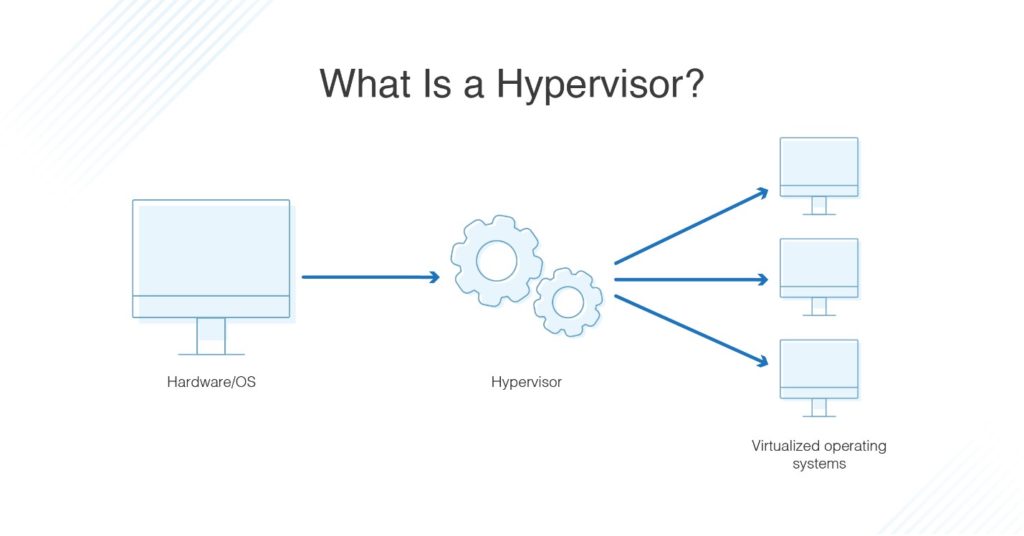The Use of a Hypervisor

Hypervisors serve several important purposes in computing environments, and their use is particularly prominent in the context of virtualization. Here are some key uses of a hypervisor:
-
Server Virtualization:
- One of the primary uses of a hypervisor is server virtualization. It allows multiple virtual machines (VMs) to run on a single physical server, each operating as an independent and isolated system.
- Server virtualization enhances resource utilization by enabling multiple workloads to share the same physical hardware.
-
Consolidation of Hardware Resources:
- Hypervisors facilitate the consolidation of hardware resources, such as CPU, memory, storage, and network, by running multiple VMs on a single physical machine.
- This consolidation leads to cost savings, as it reduces the need for maintaining separate physical servers for each application or workload.
-
Isolation of Environments:
- Hypervisors provide a level of isolation between virtual machines. Each VM operates independently, ensuring that activities in one VM do not impact others.
- This isolation is crucial for security, stability, and reliability in multi-tenant environments.
-
Resource Allocation and Management:
- Hypervisors manage the allocation of physical resources among virtual machines. This includes distributing CPU time, memory, and storage according to the needs of each VM.
- Resource allocation can be dynamically adjusted to respond to changing workloads.
-
Testing and Development:
- Hypervisors are widely used for testing and development purposes. They allow developers and testers to create and run multiple virtual environments on a single physical machine.
- VM snapshots and cloning features enable easy testing and experimentation without affecting the production environment.
-
Disaster Recovery and Backup:
- Hypervisors support features such as VM snapshots and live migration, making it easier to implement disaster recovery solutions.
- VM backups and snapshots allow for quick recovery in the event of system failures or data corruption.
-
Desktop Virtualization:
- Hypervisors are used in desktop virtualization scenarios where multiple virtual desktops run on a single physical machine.
- This approach provides flexibility for organizations, allowing users to access their desktop environments from various devices.
-
Cloud Computing:
- Hypervisors play a key role in cloud computing by enabling the creation and management of virtualized infrastructure.
- Cloud providers use hypervisors to optimize resource usage and offer scalable and flexible services to their users.
-
Operating System Independence:
- Virtual machines are abstracted from the underlying hardware, allowing them to run different operating systems on the same physical host.
- This feature is valuable for running legacy applications, testing software compatibility, and supporting diverse workloads.
In summary, hypervisors provide a layer of abstraction between the physical hardware and the operating systems or applications running on it. This abstraction allows for greater flexibility, efficiency, and scalability in managing computing resources, making hypervisors a fundamental technology in modern IT environments.
Thank you.
